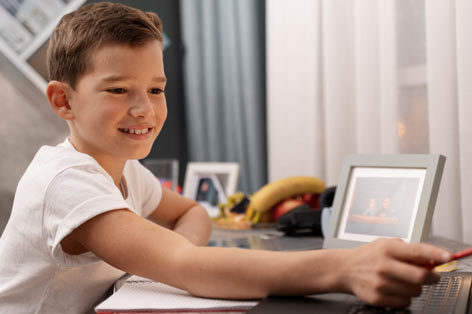“Scratch for Juniors – Part 2” builds upon “Scratch for Juniors – Part 1” and students continue on their exciting journey to learn coding at an early age. This Part 2 is also specially designed for students in the age group of 5 to 7 years. MIT Scratch is a programming language designed for students in the ages 8 to 16, according to the MIT Scratch website. Scratch is a block-based programming language that was created at MIT.
bitWise Academy has built a curriculum utilizing MIT Scratch for kids as young as 5 years to start building Scratch programs. Part 1 introduced our young learners to basic building blocks of Scratch, sprites, motion, and some simple animations and backgrounds to the program. Part further builds upon those concepts and teaches the young learners about colors, more animations, and music. By the end of these 2 courses, the students will have confidence using Scratch and be ready for more fast-paced courses.
While Scratch can be explored by most young students on their own, for kids younger than 6 years of age some of them might need an initial guidance to get them started. Majority of the kids are fine on their own after getting the initial guidance. Once young kids are past 6 years of age, we find that they are able to explore and learn at their own pace without much external guidance.
Students do not watch videos to learn. On the contrary, they interact with a chatbot avatar and take a guided, interactive tour through all the important Scratch blocks while building interesting example programs. Students will learn how to use different block types such as Motion, Looks, Sound, Events, and many more.
“Introduction to Programming with Scratch” is split into multiple lessons with each lesson composed of multiple topics, enabling one to create programs from the get-go! To be able to practice the examples and do more hands-on programming, one can click on the menu item called Scratch Editor, which launches the MIT Scratch editor in a new browser tab. At the end of each lesson, students have to take an assessment to unlock the next lesson in their learning path. Students are awarded various badges for finishing each lesson and passing the assessment. Students also earn a certification upon completing the entire course successfully.
This course provides young students the confidence to start building blocks of logic and executing computer programs. It develops their creative and logical thinking skills. This course also teaches several fundamental concepts of computer science and programming through well-designed hands-on examples.


